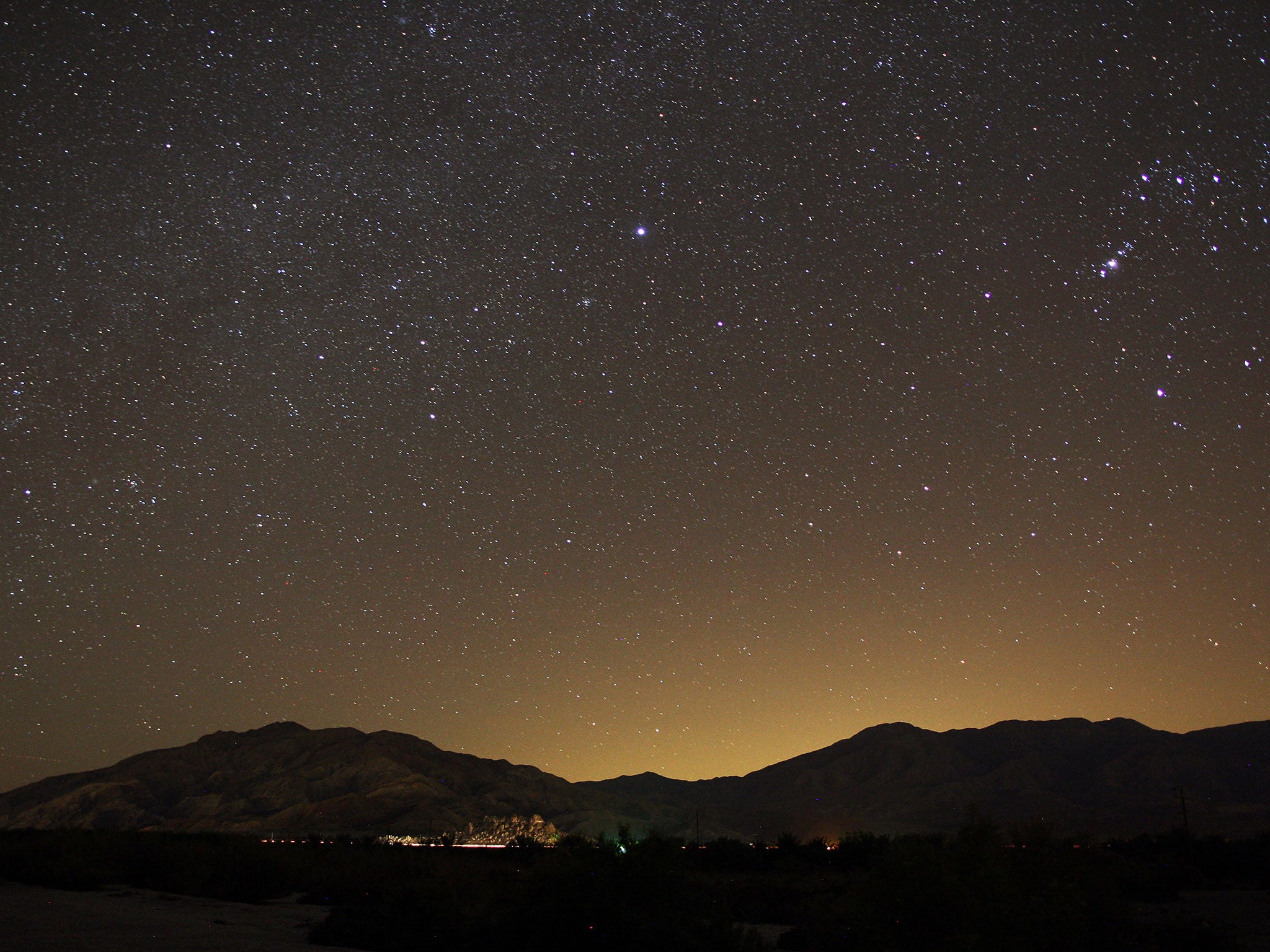Light pollution 'prevents a third of people from seeing Milky Way'
The problem is most acute in urban areas of developed countries such as the US

Your support helps us to tell the story
From reproductive rights to climate change to Big Tech, The Independent is on the ground when the story is developing. Whether it's investigating the financials of Elon Musk's pro-Trump PAC or producing our latest documentary, 'The A Word', which shines a light on the American women fighting for reproductive rights, we know how important it is to parse out the facts from the messaging.
At such a critical moment in US history, we need reporters on the ground. Your donation allows us to keep sending journalists to speak to both sides of the story.
The Independent is trusted by Americans across the entire political spectrum. And unlike many other quality news outlets, we choose not to lock Americans out of our reporting and analysis with paywalls. We believe quality journalism should be available to everyone, paid for by those who can afford it.
Your support makes all the difference.A third of people on Earth are no longer able to look up at the night sky and experience the full glory of the Milky Way, scientists claim.
Experts have produced a new atlas of light pollution which shows that across many regions of the world, the Milky Way - the brilliant river of stars that has inspired philosophers, scientists, and poets throughout history - is hidden behind a blanket of luminous fog.
The problem is most acute in urban areas of developed countries such as the US, where an estimated 80 per cent of the population is affected by light pollution.
Dr Chris Elvidge, from the National Centres for Environmental Information in Boulder, Colorado, US, said: "We've got whole generations of people in the United States who have never seen the Milky Way.
"It's a big part of our connection to the cosmos - and it's been lost."
The team of US and Italian scientists used high-resolution satellite images and sky brightness measurements to produce the new atlas, published in the journal Science Advances.
Lead author Dr Fabio Falchi, from the Light Pollution Science and Technology Institute in Italy, said: "I hope that this atlas will finally open the eyes of people to light pollution."
Singapore, South Korea and Italy were among the countries with the biggest artificial light problem while Canada and Australia retained the most dark skies.
In western Europe, only small areas of night sky remained untarnished by light, chiefly in Scotland, Sweden and Norway.
Despite the vast open spaces of the American west, almost half of the US experienced light-polluted nights.
Co-author Dan Duriscoe, from the US National Park Service, said: "In the US, some of our national parks are just about the last refuge of darkness - places like Yellowstone and the desert south-west. We're lucky to have a lot of public land that provides a buffer from large cities."
PA
Join our commenting forum
Join thought-provoking conversations, follow other Independent readers and see their replies
Comments